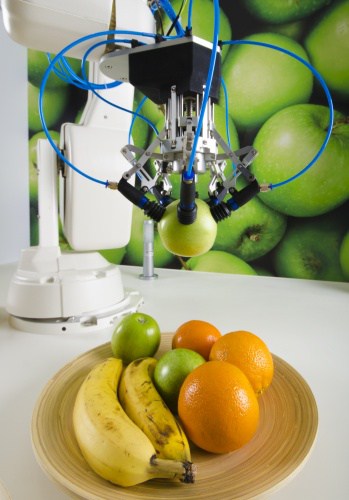Developed by engineers at UK design and development firm Cambridge Consultants, the robot is equipped with specially developed algorithms that enable its machine vision system to deal with changes in position and shape in much the same way as a human. In a demonstration the robot was able identify and pick individual items of fruit from a pile of fruit stacked randomly in a bowl. The custom-made hand then adapts to the shape of the fruit and securely grips it without damaging it. Once picked, the fruit can also be sorted by colour so that, for example, red apples can be separated from green apples.

According to the team behind the device, this represents a significant step forward for an industrial system. “Traditional robots struggle when it comes to adapting to deal with uncertainty,” said Chris Roberts, head of industrial robotics at Cambridge Consultants. “Our innovative blend of existing technologies and novel signal processing techniques has resulted in a radical new system design that is poised to disrupt the industry.”
“Our world-class industrial sensing and control team has combined high-powered image-processing algorithms with low-cost sensors and commodity hardware to allow ‘soft’ control of robots when the task is not rigidly defined,” added Roberts. “The system is capable of handling objects for which no detailed computer-aided design (CAD) model exists – a necessary step to using a robot with natural objects which, although they share some characteristics, are not identical.”












Microplastics evading capture in wastewater treatment
Can anyone provide a link to a credible peer-reviewed study demonstrating toxicity from microplastics? This report uses words like ´potential´ and...